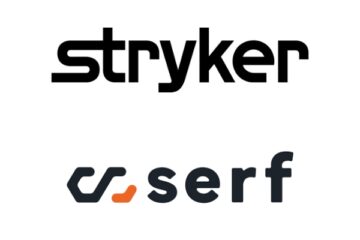Vegetative and comatose state, invented a software that verifies the patient’s state of consciousness
Turin, 18 April 2018 – The scientific project “Neural Interface to evaluate the level of awareness of non-responsive patients and encourage communication with the outside world “, coordinated by the Puzzle Center and co-funded by the Cassa Risparmio di Torino Foundation (CRT).
The project aims to develop software that can verify the presence of a state of consciousness in post-coma patients who can not communicate.
The Puzzle Center research group (which collaborates with the Cto hospital and the Unipolar Spinal Unit of the City of Health in Turin), under the guidance of Dr. Marina Zettin, she began to develop a brain-computer interface to allow doctors to diagnose the presence of consciousness in non-responsive patients, that is, in those patients who, after coming out of a coma, seem to no longer respond to to the cuno stimolo
The project was designed by dr. Vito De Feo and is carried out in collaboration with the Neural Computation Laboratory of the Italian Institute of Technology in Rovereto ̵
1; directed by prof. Stefano Panzeri -, with the Department of Automation and Computer Science of the Polytechnic of Turin, which participates through the research group of Prof. Gabriella Olmo, and with the Department of Psychology of the University of Turin, which participates through the direct research group from prof. Giuliano Geminiani
Following important traumatic events (for 40% road accidents), vascular (eg stroke or cerebral hemorrhage), anoxic or infectious, the brain can undergo severe damage, which often lead to a coma . Two hundred and fifty thousand people come into a coma each year as a result of accidents, poisoning or illness
The coma, however, is only a transitory condition. Some patients fail to overcome the acute phase and die. Others, however, after a few days or a few weeks, awaken. The most fortunate, about one subject every three, completely recover the state of consciousness.
The other patients, however, pass from a coma to a series of clinical conditions identified as Vegetative State (SV), in which the consciousness is totally absent , and State of Minimum Consciousness (SMC), where, instead, there is an emerging state of consciousness, often very difficult to diagnose.
While patients in a coma can not wake up, patients in SV and SMC recover the vigilance, or reopen the eyes and some involuntary reflexes. Until a few years ago it was believed that all patients who came out of the coma, who were not responsive, were in SV, totally devoid of self-awareness and the surrounding environment
In recent years, however, evidence has accumulated of presence of consciousness even in non-responsive patients, revealing a high incidence of diagnostic error. Some studies, in fact, suggest that as many as 43% of the patients today diagnosed as SV, despite having recovered the state of consciousness, are unable to show any sign of presence of consciousness during diagnostic tests. The reason is that these tests are based solely on motor responses to verbal commands and patients in SV often suffer from a total paralysis that also includes eyelid beats and eye movements.
Nationally, it is estimated that people who lie in a non-responsive state there are a few thousand and this number is inexorably destined to grow, both in consideration of the increased earliness and extension in the territory of emergency medicine, and the prolonged survival.
It is therefore clear that the criteria and the instruments used today to make a differential diagnosis between patients in a vegetative state and patients in a condition of minimal non-responsive consciousness are insufficient. The clinical evaluation, in fact, at present is not able to objectively distinguish between motor reflexes that could conceal, in reality, unsuccessful attempts to intentionally execute movements, and automatic reflexes devoid of intentionality of any kind.
‘idea of the magnitude of the phenomenon, just consider that, in Italy, one person every three who is in a coma, has an age between 0 and 15 years and about 700 children are currently in SV.
The doctor Zettin and his research group, including Dr Danilo Dimitri, want to respond to the need to develop a brain-computer interface that allows detecting, through non-invasive measurements, such as electroencephalic and electromyographic measurements, motor intentions of these patients regardless of whether they produce a visible movement to the examiner.
The design hypothesis assumes that people with low degree of consciousness are able to plan the movements required from the outside, but are not able to execute them correctly. Thanks to an innovative method of analysis of these electrophysiological signals, they will try to isolate and classify the so-called electric readiness potentials, used for the first time in non-responsive patients. The analysis of these signals would make it possible to distinguish between totally unconscious movements (eg reflections) and intentional movements, revealing the presence of intention and consciousness.
The main objective is to develop a brain-computer interface able to provide further diagnostic details that can detect degrees of consciousness in non-responsive patients, through the creation of a dedicated software
The computerized program will allow the analysis of specific electrophysiological parameters (Electroencephalography, EEG) and electromyography (Electromyography, EMG), for distinguish between intentional and reflected movements.
The designed interface not only allows better diagnosis in clinical realities, but also allows patients themselves to communicate simple intentions (eg “yes”, “no”) to medical personnel , considerably increasing their quality of life and the effectiveness of the tera neuro-rehabilitative pie
At present the operations of creation of the experimental paradigm and of the software have been completed, while the experimental application is being carried out at the Puzzle Center.
Source: tech2


